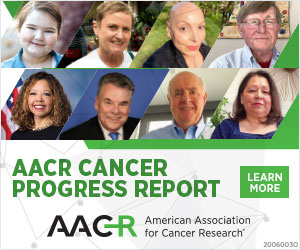Cancer Research
Saves Lives.
June is National Cancer Survivor Month.
#ResearchSavesLives #CelebrateSurvivorship
During National Cancer Survivor Month, we celebrate the millions of people and families in the United States and worldwide who are living with, through, and beyond a cancer diagnosis. Learn more about the spectacular progress driven by cancer research and test your knowledge with our Cancer Survivors quiz.
-
Cancer research is the foundation of progress against the collection of devastating diseases we call cancer. It is the driving force behind every advance across the clinical cancer care continuum.
In the mid-1970s, the five-year relative survival rate for all cancers combined was 49 percent. What was that rate as of 2017?- 52 percent
- 58 percent
- 63 percent
- 67 percent
- 95 percent
-
Research-driven progress in cancer detection, diagnosis, and treatment is helping more and more people to survive longer and lead fuller lives after a cancer diagnosis. When the National Cancer Act of 1971 was signed into law in the United States, there were 3 million cancer survivors living in this country.
How many cancer survivors are living in the United States as of 2019, the most recent year for which such data are available?- 5.7 million
- 7.9 million
- 11.1 million
- 14.2 million
- 16.9 million
-
Progress in cancer research and care has eliminated disparities in cancer survivorship.
- True
- False
Question 1 of 3
Answer: 67 percent
Advances propelled by research are helping drive down U.S. cancer death rates. The age-adjusted U.S. cancer death rate declined by 29 percent from 1991 to 2017, a reduction that translates into 2.9 million cancer deaths avoided. In addition, the U.S. five-year relative survival rate for all cancers combined rose from 49 percent in 1971 to 67 percent in 2017, which is the last year for which we have data. Learn more here.
Question 2 of 3
Answer: 16.9 million
As of 2019, there are more than 16.9 million people in the United States living with, through, and beyond a cancer diagnosis. Each of these individuals has a unique experience and outlook. Some will be successfully treated and will live cancer-free for many years. Others will live continuously with the disease. Cancer survivorship encompasses three distinct phases: the time from diagnosis to the end of initial treatment, the transition from treatment to extended survival, and long-term survival. Learn more about cancer survivorship.
Question 3 of 3
Answer: False
Advances against cancer have not benefited everyone equally and certain segments of the population shoulder a disproportionate burden of the disease.
Examples of U.S. cancer health disparities in survivorship and treatment include:
Examples of U.S. cancer health disparities in survivorship and treatment include:
- Non-Hispanic Black children and adolescents who have cancer are more than 50 percent more likely to die from the cancer than non-Hispanic white children and adolescents who have cancer.
- Hispanic adults have a stomach cancer death rate almost twice that of non-Hispanic white adults.
- American Indian/Alaska Native adults are twice as likely to develop liver and intrahepatic bile duct cancer as non-Hispanic white adults.
- Women living in Arkansas have a cervical cancer incidence rate that is more than twice that for women living in Vermont.
- Men living in the poorest counties in the United States have a lung cancer death rate that is 42 percent higher than that for men living in the most affluent counties.
- Bisexual women are 70 percent more likely to be diagnosed with cancer than heterosexual women.
You answered out of 3 correctly!
Thank you for participating in our National Cancer Survivor Month quiz highlighting just some of the advances in cancer research that are benefiting patients today.
Cancer Research Saves Lives!
Throughout June we encourage you to share your experiences with cancer and cancer research on social media using the hashtags — #ResearchSavesLives and #CelebrateSurvivorship. Learn more about the American Association for Cancer Research (AACR) — the first and largest cancer research organization in the world — and how you can help defeat cancer here: AACR.org.
Read Cancer Today magazine, for authoritative information to help patients and families navigate their cancer journeys from diagnosis through treatment and beyond. Sign up for AACR Advocacy Alerts to get news and updates about AACR's Patient Advocacy Programs.
Tweet your score to help spread awareness here:
Tweet Your Score




